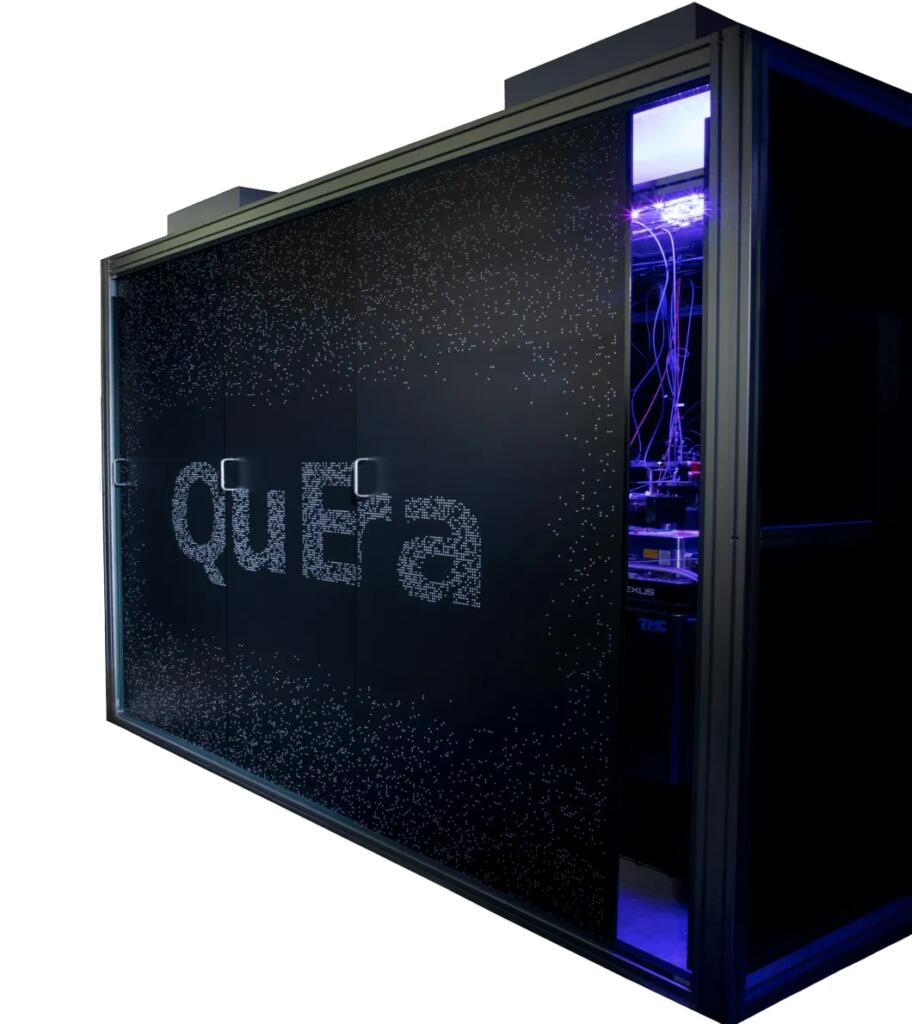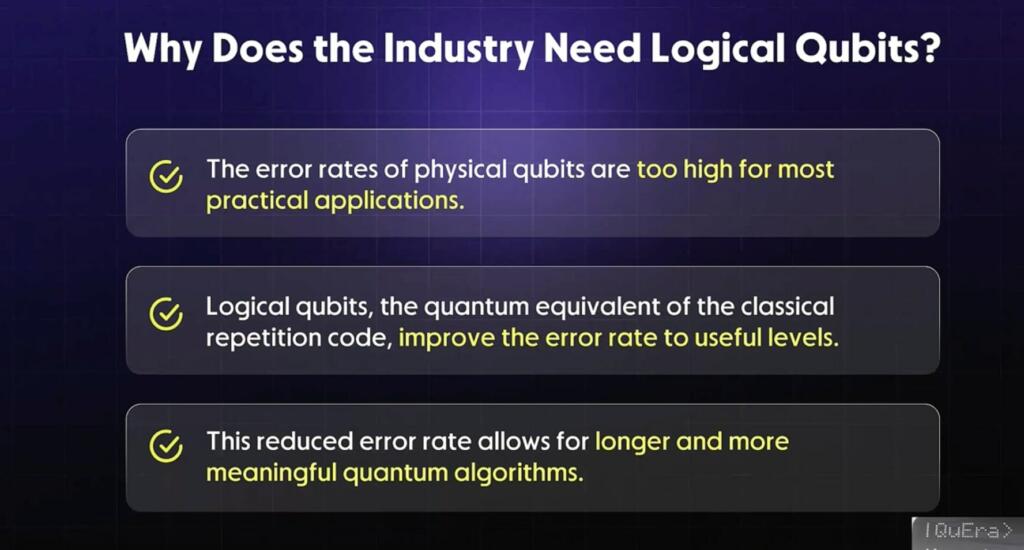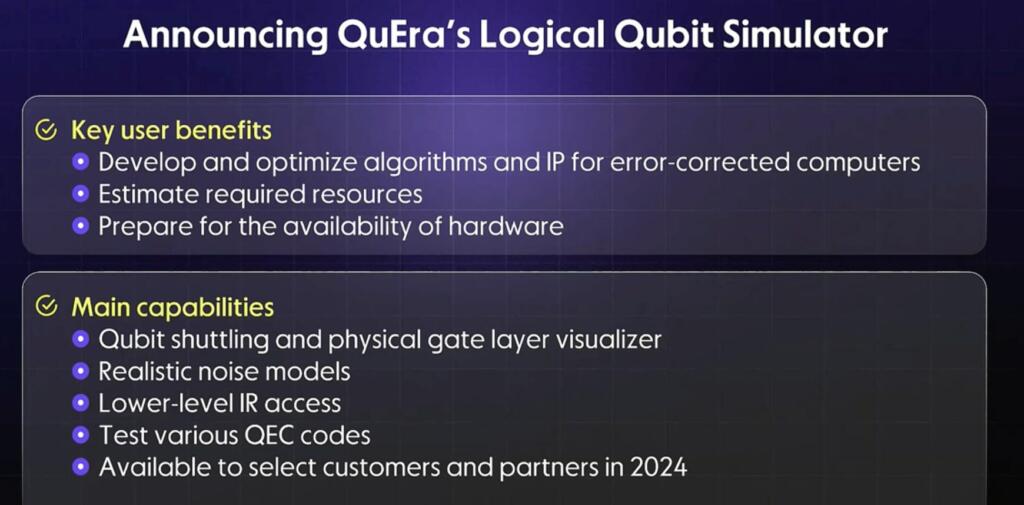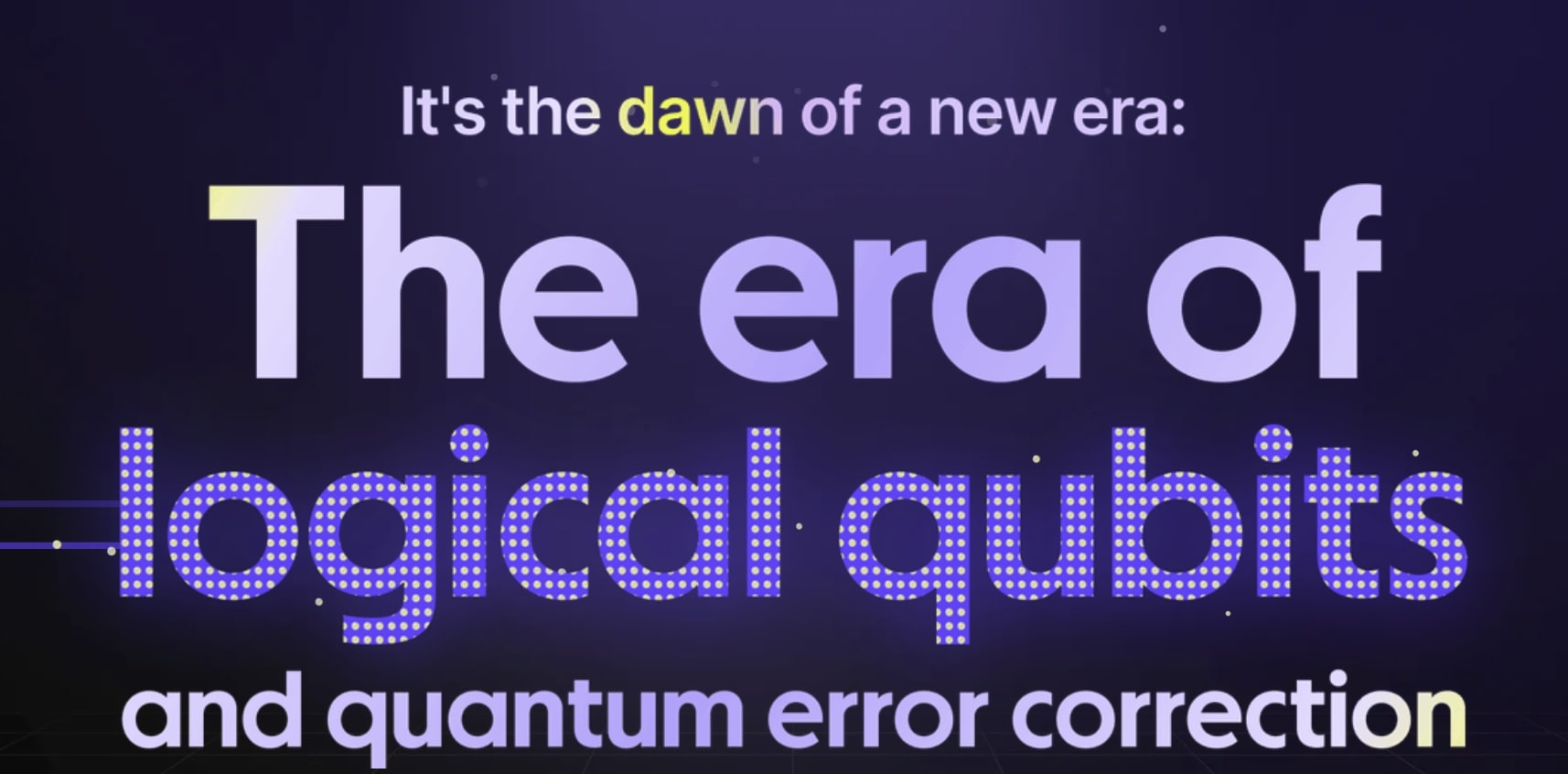In 2024, Quera, neutral atom quantum computer company, will beLaunching a quantum computer with ten logical qubits, unique transversal gate capability, and over 256 physical qubits.
The Transversal gates are crucial in quantum computing for their ability to prevent error propagation across qubits, making them inherently error-resistant. They simplify quantum error correction by allowing errors to be corrected independently for each qubit. This system establishes the groundwork for error-corrected quantum computing.

Additionally, to assist in assessing and preparing algorithms for the era of error correction, QuEra will release a logical qubit simulator in the first half of 2024.
In 2023, the Google Quantum AI Lab demonstrated a 2.9% error rate using three logical qubits.
Quera’s error rate is 0.5% with 48 logical qubits.
The world leader is the University of Oxford, which has achieved error rates of less than 0.01% — but only between two-qubit gates.
QuEra plans to launch several quantum computers in the coming years, starting with a 30-logical-qubit, 3,000 physical qubit machine coming out in 2025.
In 2026, Quera plans 10,000 physical qubits and 100 logical qubits. This should surpass calculation abilities for the best regular supercomputers.












Brian Wang is a Futurist Thought Leader and a popular Science blogger with 1 million readers per month. His blog Nextbigfuture.com is ranked #1 Science News Blog. It covers many disruptive technology and trends including Space, Robotics, Artificial Intelligence, Medicine, Anti-aging Biotechnology, and Nanotechnology.
Known for identifying cutting edge technologies, he is currently a Co-Founder of a startup and fundraiser for high potential early-stage companies. He is the Head of Research for Allocations for deep technology investments and an Angel Investor at Space Angels.
A frequent speaker at corporations, he has been a TEDx speaker, a Singularity University speaker and guest at numerous interviews for radio and podcasts. He is open to public speaking and advising engagements.


Someone should write a ‘Qubits for Dummies’ book for people like me. I can wrap my head around ‘super-position’. It’s a weird phenomenon, but explainable.
What I don’t understand is how to program non-binary code. How does the code correspond to the different states of the qubit? How does the base code/algorithm recognize which state the qubit is in? How does this new code speed up calculations?
I’m not asking about quantum mechanics or quantum sensors or the 7 different types of qubits. I’m asking about the code and calculations. A logic gate is either on or off. But not a qubit. Just because the superpositional state falls to a binary state once measured, that only means you get a random on or off. How do you code for a random on or off gate?
There are good YouTube videos for explaining Shor’s algorithm. Maybe the best way to understand quantum computing is to learn how that particular algorithm works.
If you have a superposition of many pure states, you can think of it as a long list of complex numbers (“amplitudes”), one per state in the superposition. A “gate” is an operation that modifies all those numbers at the same time. A “measurement” of the entire state picks one state randomly, with a probability equal to the square of the norm of its amplitude.
If the overall state is two entangled states x and y, then there is an amplitude for each possible (x,y) pair, and measuring just x will give an answer with a probability that comes from adding all the amplitudes for pairs with the same x. And after making the measurement, you’re left with just a superposition of (x,y) pairs that had that particular number for x.
Quantum algorithms use those properties. It sounds hard to make anything useful out of that, and it is. That’s why there are surprisingly few useful algorithms known for quantum computers.
Thank you, Researcher. I am glad there are people smarter than me who are working on this.